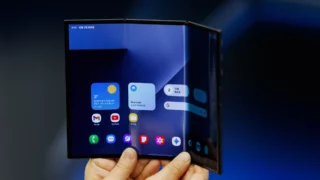Scientists have developed an ultra-thin and safe battery that charges with tears. This innovative technology not only meets the energy needs of smart contact lenses but also holds promising solutions for diabetes patients. Here are the details…
A tear-charfing battery will be used for smart contact lens
We’ve all seen it in movies, especially in the Mission: Impossible series, where the main character receives information through a smart contact lens. However, such devices seemed impractical in the real world due to energy requirements. Lee Seok Woo and his team at Nanyang Technological University have found a solution to this problem with tear-charging batteries.

This new battery technology is only as thick as a strand of hair and small enough to be placed inside a contact lens. The glucose in tears charges these batteries. The wetter your eyes are, the longer the battery lasts. And if you cry, just imagine how charged the battery will get. This technology can be used not only for smart contact lenses but also for measuring blood sugar levels in diabetes patients.
These tear-charging batteries work with a biocompatible saline solution. This new method, which replaces traditional lithium-ion batteries, is designed for user safety. The battery can be charged both by wired and chemical methods. The chemical method utilizes the reaction between the glucose on the battery and the sodium and chloride ions in the saline solution. This way, the battery reaches 80% charge level with an 8-hour charge, providing several hours of use.
However, researchers are working to increase the voltage of the battery. Current prototypes produce a voltage between 0.3V and 0.6V, which is not enough for features like data storage or internet connectivity. Nonetheless, this technology could have other uses such as non-invasive blood sugar monitoring.
Researchers are now working to make these batteries suitable for commercial use and reduce their costs. Each battery is designed to cost just a few dollars. So, what do you think about this tear-powered battery? How might such innovations become a part of our daily lives in the future? Don’t forget to share your comments with us!














